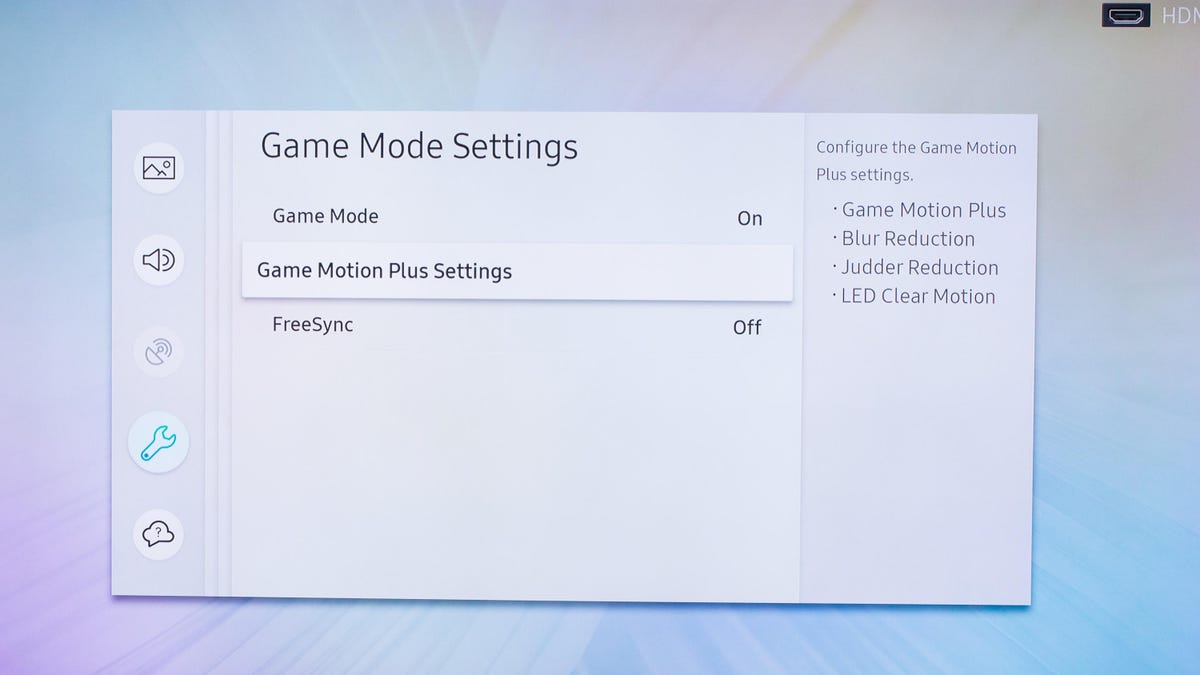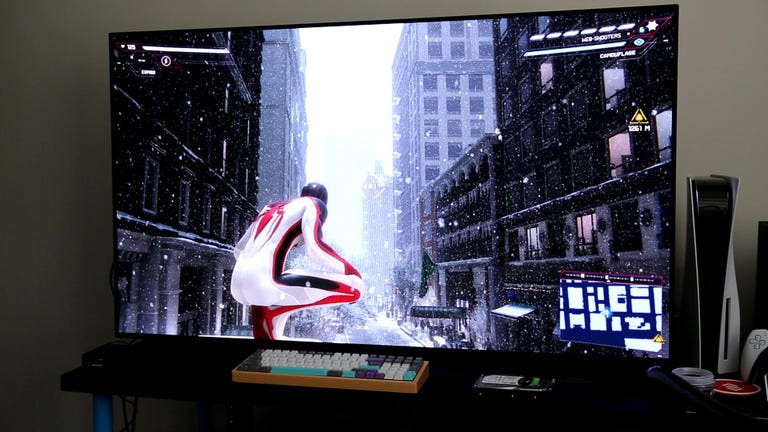Our TV reviews follow a rigorous, unbiased evaluation process honed over nearly two decades of TV reviews. Our primary TV test lab has specialized equipment for measuring light and color, including a Konica Minolta CS-2000 spectroradiometer, a Murideo Sig-G 4K HDR signal generator and an AVPro Connect 8×8 4K HDR distribution matrix. We use Portrait Displays CalMan Ultimate software to evaluate every TV we review. In every CNET TV review, three or more similar TVs are compared side by side in various lighting conditions playing different media, including movies, TV shows and games, across a variety of test categories, from color to video processing to gaming to HDR. Our reviews also account for design, features, smart TV performance, HDMI input and gaming compatibility, as well as other factors.
Measuring input lag (in milliseconds) is an important component of our process for testing gaming TVs.
Measuring TVs’ input lag
| TV model | On (4K HDR) | Off (4K HDR) | On (1080p) | Off (1080p) |
|---|---|---|---|---|
| LG OLED65C2 | 9.87 | 81.10 | 9.93 | 72.80 |
| Amazon Fire TV 4-Series | 10.03 | 119.23 | 34.80 | 102.20 |
| Samsung QN55Q60B | 10.10 | 68.63 | 10.00 | 87.80 |
| TCL 50S455 | 10.13 | 49.90 | 10.23 | 33.27 |
| Samsung QN65QN90B | 10.50 | 74.30 | 10.73 | 95.00 |
| Vizio V550M | 10.43 | 67.70 | 10.63 | 51.57 |
| Hisense 50A6H | 10.53 | 119.27 | 10.80 | 43.23 |
| TCL 65R655 | 10.90 | 11.40 | 11.27 | 11.37 |
| Sony KD55X80K | 11.67 | 132.63 | 11.93 | 132.77 |
| Vizio M65QXM-K03 | 15.10 | 127.37 | 15.33 | 60.10 |
| Hisense 65U8H | 15.43 | 108.73 | 15.33 | 108.73 |
| Sony KD-65X95K | 18.13 | 144.53 | 18.03 | 161.20 |
Check out our page on how we test TVs for more details.
Input lag will often be lower in game mode than in any other mode on your TV. Here are a few more gaming-specific aspects we looked at for each TV.
How to turn on game mode. In most cases, viewing in game mode isn’t automatic so you’ll have to turn it on manually, and sometimes the gaming monitor setting can be difficult to find. Many use a picture mode called “Game” while some, like Samsung and Vizio, let you apply game mode to any setting.

Game mode makes a difference, except when it doesn’t. As you can see in the table above, many TVs cut lag substantially when you turn on game mode, but plenty don’t. In general, expensive TVs with elaborate video processing get more of a benefit when you engage game mode.
Most TV game modes are good enough for most gamers. No matter how twitchy you are, it’s going to be tough to tell the difference between 13 and 30 milliseconds of input lag. Many gamers won’t even be able to discern between having game mode on and off — it all depends on the game and your sensitivity to lag.
Turning game mode on can hurt image quality (a little). TV-makers’ menus often refer to reduced picture quality. Reduced picture quality is generally the result of turning off that video processing. In my experience, however, the differences in image quality are really subtle with console gaming, and worth the trade-off if you want to minimize lag for a great gaming experience.
4K HDR gaming lag is different from 1080p. The display resolution you play at has an impact, and since new consoles prominently feature 4K HDR output for games, I started testing for 4K HDR lag in 2018. In general, the numbers are similar to the lag with standard 1080p resolution, but as you can see from the chart above, there are exceptions.
Testing is an inexact science. I use a Leo Bodnar lag tester. Here’s how it works, and how I use it. You might see different lag test results from different review outlets, which may use Bodnar or another method.

Watch this: Here’s what to look for when buying a TV for gaming

